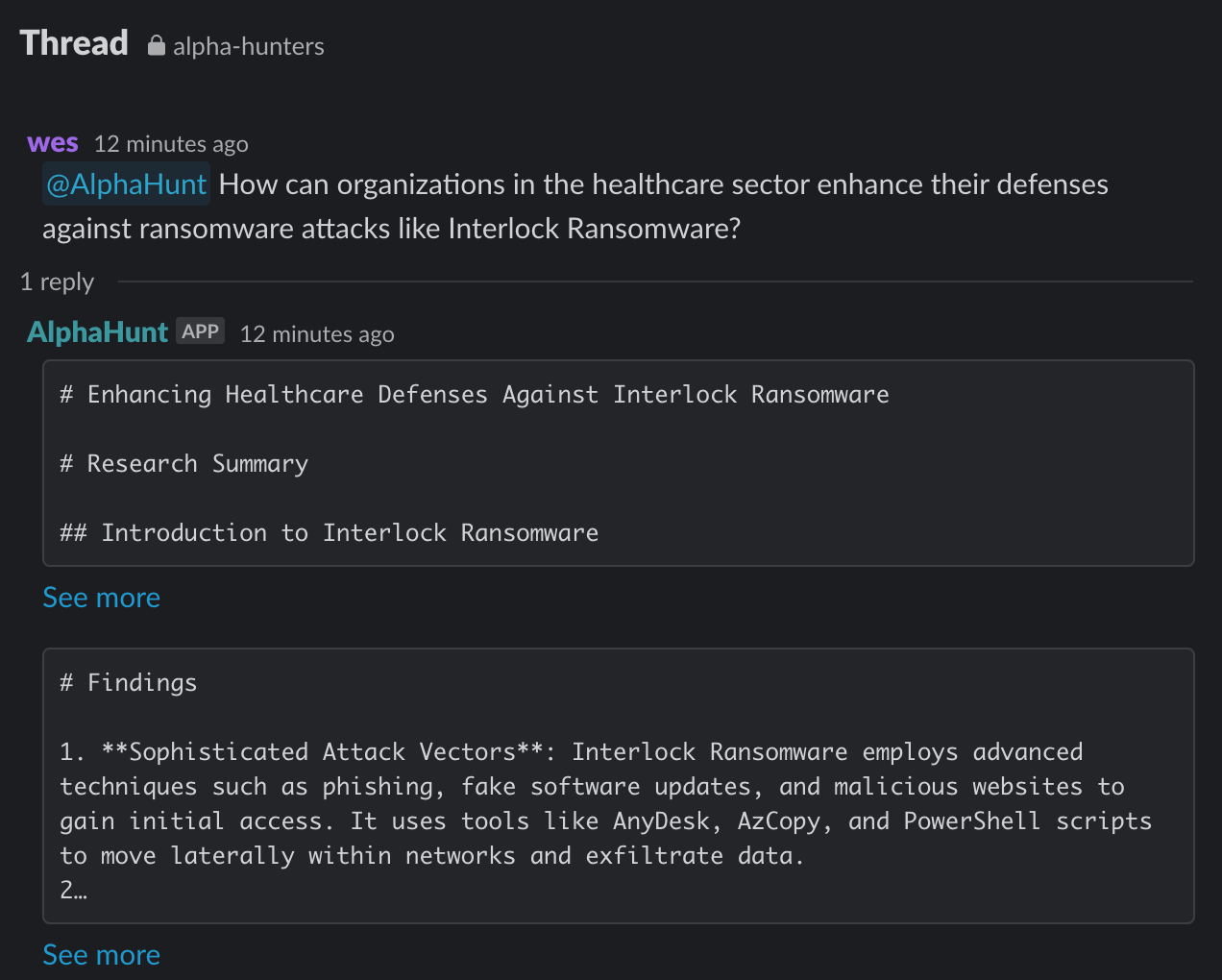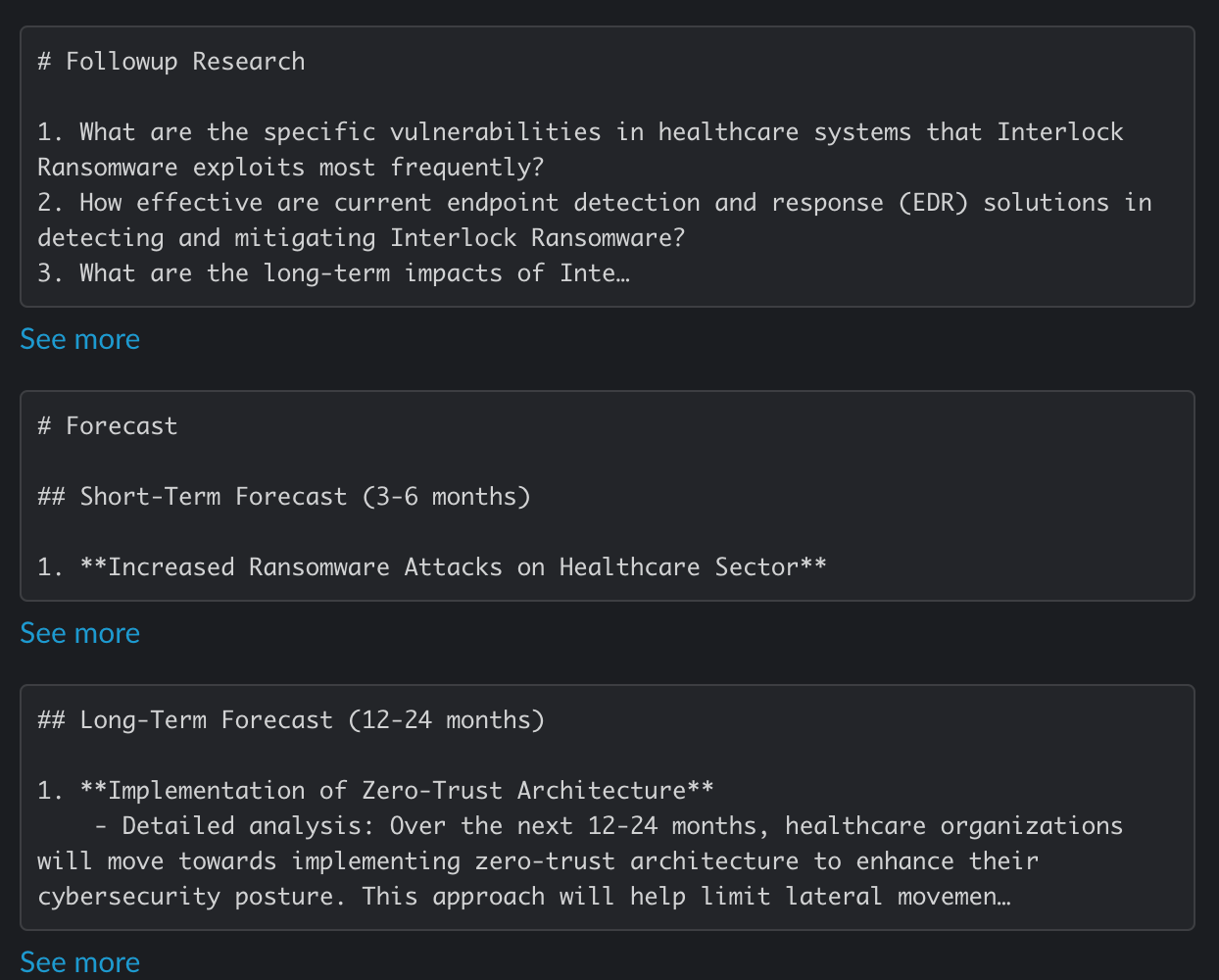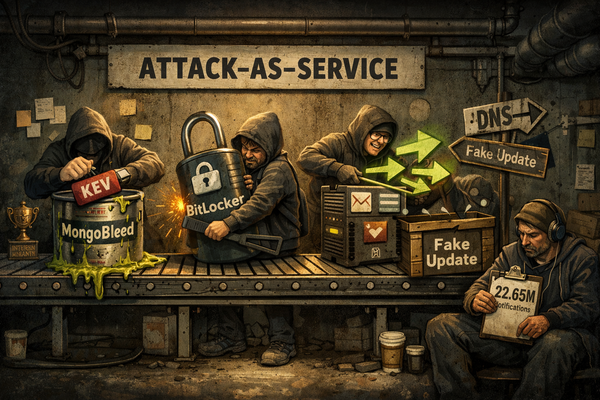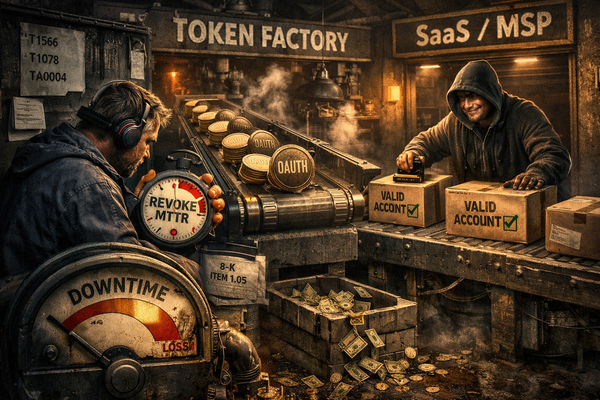Enhancing Healthcare Defenses Against Interlock Ransomware
Interlock Ransomware is an emerging and sophisticated threat that has been increasingly targeting healthcare organizations. This ransomware employs advanced techniques such as phishing, fake software updates, and malicious websites to gain initial access.



AlphaHunt works best- in Slack. Chat with your team, and your intelligence.
TL;DR
- Sophisticated Attack Vectors: Interlock Ransomware employs advanced techniques such as phishing, fake software updates, and malicious websites to gain initial access..
- Double-Extortion Tactics: The ransomware encrypts files and demands a ransom for decryption..
- Persistence and Evasion: Interlock Ransomware can remain undetected for extended periods, amplifying the damage it can cause..
- Targeting Healthcare: The ransomware has specifically targeted healthcare organizations, exploiting their need for continuous operation and the sensitivity of their data..
- Mitigation Strategies: Effective mitigation strategies include regular phishing awareness training, robust endpoint protection..
Research Summary
Introduction to Interlock Ransomware
Interlock Ransomware is an emerging and sophisticated threat that has been increasingly targeting healthcare organizations. This ransomware employs advanced techniques such as phishing, fake software updates, and malicious websites to gain initial access. Once inside, it uses double-extortion tactics, encrypting data and threatening to leak sensitive information if ransom demands are not met. The critical nature of healthcare data and the sector's reliance on continuous operations make it a prime target for such attacks.
Attack Vectors and Techniques
Interlock Ransomware utilizes a combination of tools and techniques to infiltrate and control victim systems. These include Remote Access Tools (RATs), PowerShell scripts, credential stealers, and keyloggers. The ransomware has been observed targeting both Windows and FreeBSD platforms. It uses legitimate tools like AnyDesk, AzCopy, and PowerShell scripts to move laterally within networks and exfiltrate data. Additionally, it employs techniques to disable endpoint detection and response (EDR) systems, allowing it to remain undetected for extended periods.
Targeting Healthcare
Healthcare organizations are particularly vulnerable to Interlock Ransomware due to the critical nature of their data and operations. Recent attacks have severely disrupted operations and exposed sensitive patient information. The ransomware exploits the need for continuous operation and the sensitivity of healthcare data, making it a lucrative target for attackers.
Mitigation Strategies
Effective mitigation strategies against Interlock Ransomware include regular phishing awareness training, robust endpoint protection, network segmentation, and the implementation of zero-trust principles. Regular backups and incident response planning are also critical. Continuous monitoring and threat intelligence can help detect and respond to ransomware attacks more effectively.
Breaches and Case Studies
-
(2024-10-01) Brockton Neighborhood Health Center
- Description: Breached in October 2024, with the attack remaining undetected for nearly two months. Sensitive patient information was exposed, and operations were severely disrupted.
- Actionable Takeaways: Implement continuous monitoring and early detection systems to identify breaches quickly. Regularly update and patch systems to close vulnerabilities.
- References: The Hacker News
-
(2024-10-30) Legacy Treatment Services
- Description: Detected in late October 2024. The attack involved the use of fake software updates to deploy the ransomware.
- Actionable Takeaways: Educate staff on recognizing phishing attempts and fake updates. Use application whitelisting to prevent unauthorized software execution.
- References: Fortinet
-
(2024-11-07) Drug and Alcohol Treatment Service
- Description: Compromised data uncovered in the same period. Attackers used a combination of RATs and credential stealers.
- Actionable Takeaways: Implement multi-factor authentication (MFA) and regular credential audits. Use network segmentation to limit lateral movement.
- References: Cisco Talos
Recommendations, Actions, Suggested Pivots, Forecasts and Next Steps..
(Subscribers Only)


![[DEEP RESEARCH] Token Factory: The 5 Costliest US Breaches of 2025](/content/images/size/w600/2026/01/z.png)


